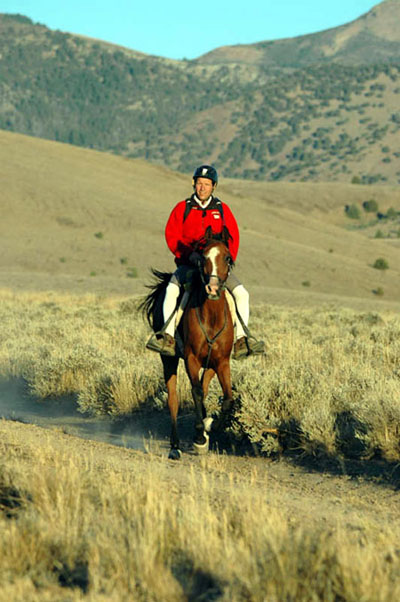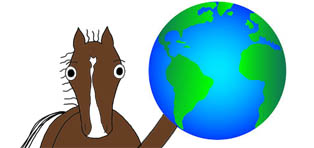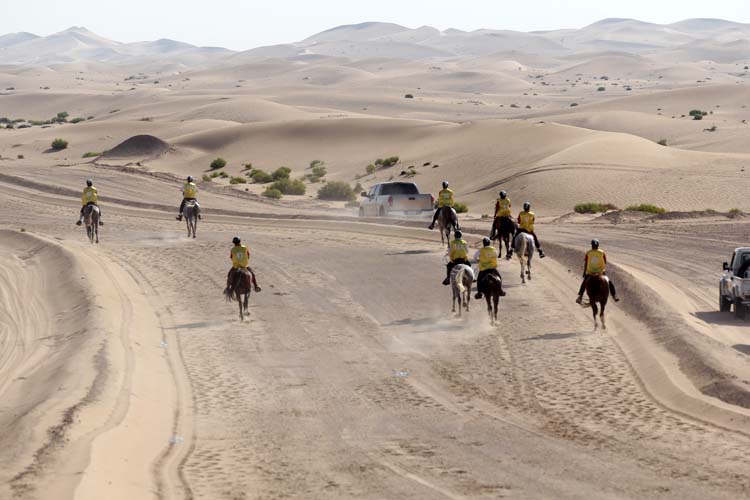 AwareWelfare.net - Full Article
AwareWelfare.net - Full Articleby John Crandell
February 28 2016
• Prologue
• The Time Is Now
• The Genesis of Modern Endurance
• Expansion Across North America
• FEI Enters the Scene
• Back in the USA
• Our Issues are More Alike Than We Realize
• A Rebirth Begins
• Building Wise Endurance Testing Programs
• Roadmap to the Future (COMING SOON)
• Creating Healthy Goalposts and Incentives (COMING SOON)
Prologue
Endurance riding was once on the vanguard of equine welfare, generating new definition in the meaning of equine welfare itself. Now that honorable position is obscured under a mountain of saddening imagery on the internet and a growing contempt from other equestrians over the level of equitation and horsemanship displayed at endurance races.
Who’s to blame? We all are, and perhaps especially those of us that have been engaged in the discipline as long as myself. I’ve been endurance racing for over forty years now; long enough to have won two Tevis and Haggin Cups, first to finish at six Old Dominion 100 mile Rides, and FEI championship medals as early as 1986 and as late as 2010. I certainly should have known better, should have spoken out more at the right time way back when. Well, no time like the present.
It’s impossible address the governance issues we’re now facing in a way that guarantees that they’ll never return if we can’t openly identify our collective mistakes that allowed this travesty to develop in the first place. So please notice that as I dissect this calamity of errors, I offend people on both sides of highly polarized positions equally. I have been party to both camps and am therefore as culpable as anyone.
I will show that the root issue here has been brooding for a long time, and goes back to a time before the involvement of the Federation Equestrian International (FEI) and well before the Persian Gulf countries participation in internationally sanctioned endurance racing.
The Time is Now
At this time the entire world, especially the equestrian community, is aware of the alarming spectacle of endurance racing activity in the United Arab Emirates. This has devastated the already fragile reputation of the Federation Equestre Internationale (FEI), which sanctions these races. The FEI has been supplying the public years of image posturing and repeated announcements that is making “sweeping changes”, but the carnage has continued with its renewed sanctioning.
Meanwhile in the United States the endurance riding disciplines national governing body is in a different kind of downward spiral. The economic demography of the U.S.A. has lured the American Endurance Ride Conference (AERC) into a dangerous trap. When businesses and organizations here listen to their constituents too democratically what they will always hear most loudly is that “we want more quantity, less cost; and we enjoy being patronized gratuitously”. Following this mandate usually creates economic growth initially, but it then leads to departure from the organizations original purpose, alienation of its original supporters, and declining standards until there is nowhere lower to go in order to acquire new members.
This is written as a warning to other regions with developing equestrian programs not to follow in our footsteps. The following is chronical of the foolish choices we’ve made that led to this mess nationally and internationally. Review this history to learn by our mistakes as the modern endurance riding discipline begins an inevitable rebirth.
There is a great spark of hope in the initiatives demonstrated at the Bouthib racecourse in Abu Dhabi. This is essentially a step back in the discipline’s history to the point in time before we began to let it go so far astray. This is the place from where we need to start again, a little wiser this time.
Our goal needs to be much more than just a tolerable amount animal suffering for the benefit of our sporting amusement. As worldwide awareness of the animal welfare sharpens, equine sports are under increasing pressure to evolve into exercises that genuinely benefit the animals. Just to “do little harm” as the general public may see it, to have image managed by skillful public relations tactics, is no longer enough. The modern world is demanding scientifically sound definitions and equitable practices of animal welfare.
Endurance riding has potential greater than any other equestrian discipline to have a positive impact in the future health and happiness of equines. The disciplines ability to closely mimic the natural challenges that forged horses as we have come to know them makes it the ideal platform for maintaining vital knowledge in genealogy, and of naturally good husbandry of the animals. This species that has carried mankind to prominence on earth desperately needs us to get this right, and we need to get this right for ourselves as well.
I’m going to point out how at time decades ago, when the world was looking to us in North America for concepts and inspiration, we had begun to make a pivotal error in the way we were allowing the distance riding discipline to be structured and governed. That fundamental flaw became embedded into the very foundation of endurance racing as it developed into an international sport with utterly dysfunctional result.
What at first seemed small and tolerable deviation from the noble philosophies that spawned the first modern endurance races here in America half century ago as has become a fundamentally dysfunctional system. In the most recent three decades it has become layered with additional distortions of best practices in order to better support the pomp and image of an international circus.
In North America that same error has had a nearly opposite effect as elsewhere, creating a loss of motivation to pursue equestrian excellence in all its aspects. This has forfeited the disciplines potential to adequately support the best breeding practices, and caused a visible decline in basic horsemanship and equitation in the distance riding community. The impact on equine welfare here has been more insidious, but it is no less tragic for horses in the end. We have simply learned how not to see it in our midst...
Read the rest here:
http://awarewelfare.net/2016/02/28/blog-post-title/





